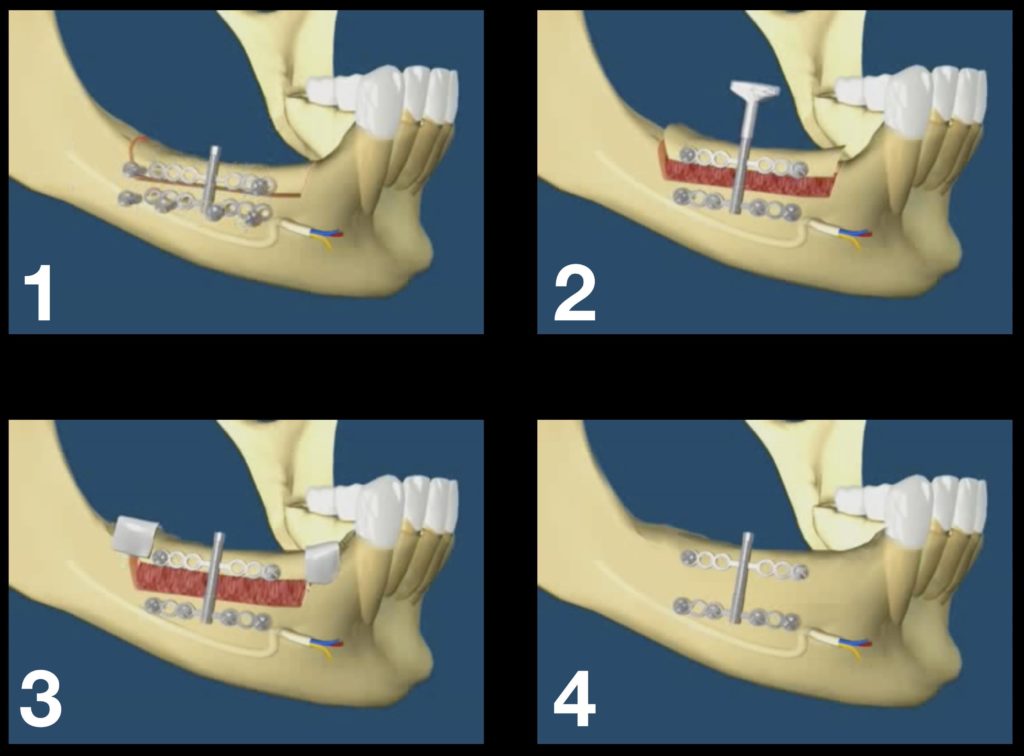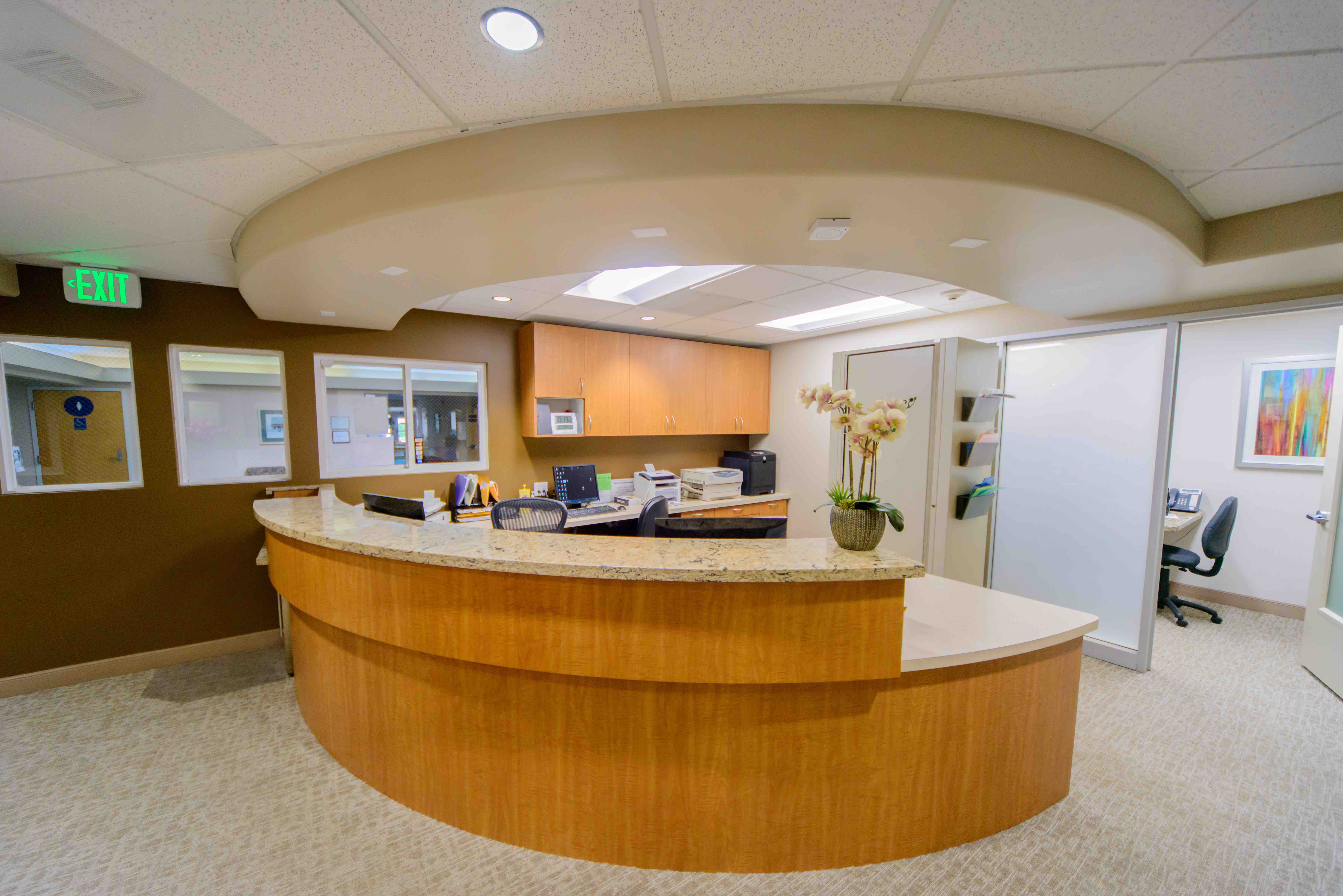Distraction osteogenesis (DO) is a relatively new method of treatment for selected deformities and defects of the oral and facial skeleton. It was first used in 1903. In the 1950s, the Russian orthopedic surgeon, Dr. Gabriel Ilizarov slowly perfected the surgical and postoperative management of distraction osteogenesis treatment to correct deformities and repair defects of the arms and legs. His work went mostly unnoticed until he presented to the Western Medical Society in the mid-1960s.
Distraction osteogenesis was initially used to treat defects of the oral and facial region in 1990. Since then, the surgical and technological advances made in the field of distraction osteogenesis have provided the oral and maxillofacial surgeons with a safe and predictable method to treat selected deformities of the oral and facial skeleton.
Video Explanation
Schedule A Consultation
If you think that you might be a good candidate for Distraction Osteogenesis please contact our office to schedule your first visit with us.
Frequently Asked Questions about Distraction Osteogenesis
What does the term distraction osteogenesis mean?
Distraction osteogenesis is the process of slowly moving apart (distraction) two bony segments in a manner to facilitate new bone growth to fill in the gap created by the separating bony segments.
Is the surgery for distraction osteogenesis more involved than “traditional surgery” for a similar procedure?
No. This surgery is always in an outpatient setting. Most patients go home the same day of surgery. The surgical procedure itself is less invasive so there is usually less pain and swelling.
Will my insurance company cover the cost of osteogenesis surgical procedure?
Yes. Most insurance companies cover the cost of the osteogenesis surgical procedure. However, it is very important that there is adequate and accurate documentation of the patient’s condition. Of course, individual benefits within the insurance company policy vary. Once we see you for your consultation at our office, we always assist you in determining whether or not your insurance company will cover a particular surgical procedure.
Is distraction osteogenesis painful?
- During The Surgery – All distraction osteogenesis surgical procedures happen while the patient is under general anesthesia. Therefore, pain during the surgical procedure is never an issue.
- After The Surgery – After your surgery, we provide you with appropriate pain medication to keep you comfortable. We also provide antibiotics to fight off infection.
- Activation of the Device – Activation of the distraction device to slowly separate the bones may cause some patients mild discomfort. In general, the slow movement of bony segments produces discomfort roughly analogous to tightening braces.
What are the benefits of distraction osteogenesis (DO) vs. traditional surgery for a similar condition?
- Less Pain – DO surgical procedures typically produce less pain and swelling than the traditional surgical procedure for a similar condition.
- Single Surgical Site – DO eliminates the need for bone grafts, and therefore, another surgical site.
- Greater Stability – Lastly, DO tends to have greater stability in major cases that involve a significant movement of bony segments.
What are the disadvantages of distraction osteogenesis?
- Multiple Visits – Distraction osteogenesis requires the patient to return to the surgeon’s office frequently during the initial two weeks after surgery. This is necessary because in this time frame the surgeon will need to closely monitor the patient for any infection and teach the patient how to activate the appliance.
- Additional Surgery – In some cases, a second minor office surgical procedure is necessary to remove the distraction appliance.
Can distraction osteogenesis be used instead of bone grafts to add bone to my jaws?

Here is an example of how DO is used to correct a deformity in the jaw to make room for implants.
Yes. Because of recent advances in technology oral and maxillofacial surgeons are able to easily place and use a distraction device to slowly grow bone in specific areas of bone loss in the upper and lower jaws. The newly formed bone can then serve as an excellent foundation for dental implants. The procedure of growing bone in the tooth supporting area of the jaw is known as Alveolar Distraction Osteogenesis.
Does distraction osteogenesis leave scars on the face?
No. The entire surgery is performed within the mouth and the distraction devices used by Dr. Chun remain inside the mouth. Because there are no facial surgical incisions during the procedure there are no visible facial scars afterward.
Are there any age limitations for patients who can receive osteogenesis?
No. distraction osteogenesis works well on patients of all ages. In general, the younger the patient the shorter the distraction time and the faster the consolidation phase. Adults require a slightly longer period of distraction and consolidation because the bone regenerative capabilities are slightly slower than those of adolescence or infants.
